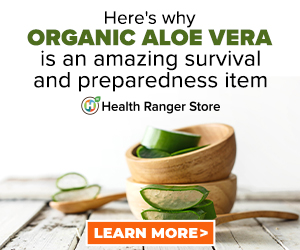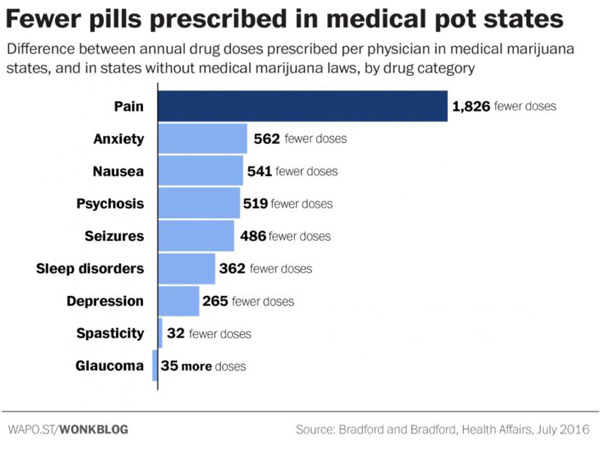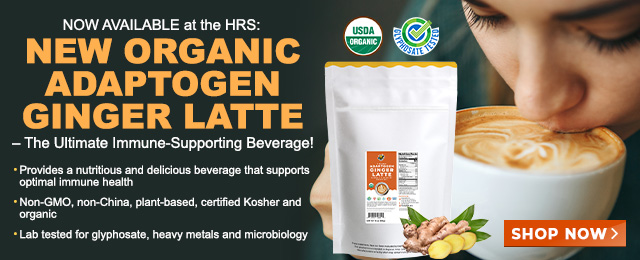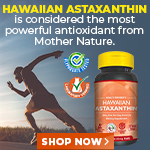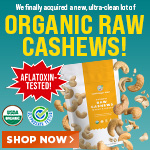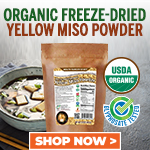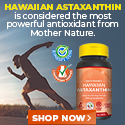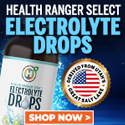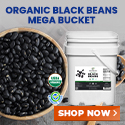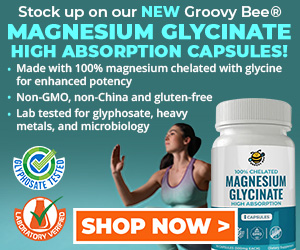The Real Reason Pharma Companies Hate Medical Marijuana (Because It Works)
Wednesday, July 27, 2016 by: Natural News Editors
Tags: Marijuana, medicine, Big Pharma
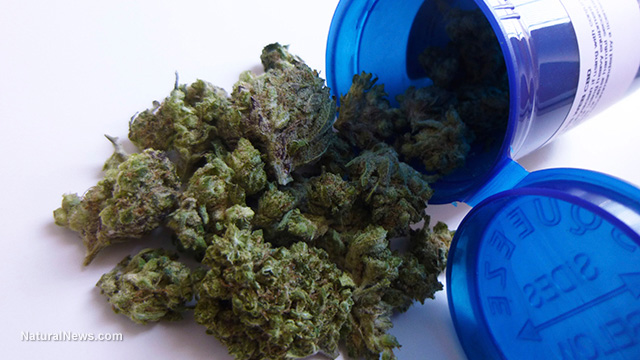
(NaturalNews) Former Federal Judge Nancy Gertner was appointed to the federal bench by Bill Clinton in 1994. She presided over trials for 17 years. And Sunday, she stood before a crowd at The Aspen Ideas Festival to denounce most punishments that she imposed.
(Article by , republished from http://libertyblitzkrieg.com)
Among 500 sanctions that she handed down, "80 percent I believe were unfair and disproportionate," she said. "I left the bench in 2011 to join the Harvard faculty to write about those stories––to write about how it came to pass that I was obliged to sentence people to terms that, frankly, made no sense under any philosophy."
She went on to savage the War on Drugs at greater length. "This is a war that I saw destroy lives," she said. "It eliminated a generation of African American men, covered our racism in ostensibly neutral guidelines and mandatory minimums... and created an intergenerational problem––although I wasn't on the bench long enough to see this, we know that the sons and daughters of the people we sentenced are in trouble, and are in trouble with the criminal justice system."
– From the post: Federal Judge of 17 Years Repents – Compares Damage Done by "War on Drugs" to Destruction of World War II [1]
Whenever an irrational and inhumane law remains on the books far longer than any thinking person would consider appropriate, there's usually one reason behind it: money.
Unsurprisingly, the continued federal prohibition on marijuana and its absurd classification as a Schedule 1 drug is no exception. Thankfully, a recent study published in the journal Health Affairs shows us exactly why pharmaceutical companies are one of the leading voices against medical marijuana. It has nothing to do with healthcare and everything to do with corporate greed.
So is it a war on drugs, or a war on cheap medicine. Decide for yourself.
The Washington Post reports: [2]
There's a body of research showing that painkiller abuse and overdose are lower in states with medical marijuana laws. These studies have generally assumed that when medical marijuana is available, pain patients are increasingly choosing pot over powerful and deadly prescription narcotics. But that's always been just an assumption. [3]
Now a new study, released in the journal Health Affairs, validates these findings by providing clear evidence of a missing link in the causal chain running from medical marijuana to falling overdoses. Ashley and W. David Bradford, a daughter-father pair of researchers at the University of Georgia, scoured the database of all prescription drugs paid for under Medicare Part D from 2010 to 2013. [4]
They found that, in the 17 states with a medical-marijuana law in place by 2013, prescriptions for painkillers and other classes of drugs fell sharply compared with states that did not have a medical-marijuana law. The drops were quite significant: In medical-marijuana states, the average doctor prescribed 265 fewer doses of antidepressants each year, 486 fewer doses of seizure medication, 541 fewer anti-nausea doses and 562 fewer doses of anti-anxiety medication.
But most strikingly, the typical physician in a medical-marijuana state prescribed 1,826 fewer doses of painkillers in a given year.
The tanking numbers for painkiller prescriptions in medical marijuana states are likely to cause some concern among pharmaceutical companies. These companies have long been at the forefront of opposition to marijuana reform, funding research by anti-pot academics and funneling dollars to groups, such as the Community Anti-Drug Coalitions of America, that oppose marijuana legalization. [5], [6]
Pharmaceutical companies have also lobbied federal agencies directly to prevent the liberalization of marijuana laws. In one case, recently uncovered by the office of Sen. Kirsten Gillibrand (D-N.Y.), the Department of Health and Human Services recommended that naturally derived THC, the main psychoactive component of marijuana, be moved from Schedule 1 to Schedule 3 of the Controlled Substances Act — a less restrictive category that would acknowledge the drug's medical use and make it easier to research and prescribe. Several months after HHS submitted its recommendation, at least one drug company that manufactures a synthetic version of THC — which would presumably have to compete with any natural derivatives — wrote to the Drug Enforcement Administration to express opposition to rescheduling natural THC, citing "the abuse potential in terms of the need to grow and cultivate substantial crops of marijuana in the United States." [7], [8], [9]
The DEA ultimately rejected the HHS recommendation without explanation. [10]Yes, this DEA...
DEA Agents Caught Having Drug Cartel Funded Prostitute Sex Parties Received Slap on the Wrist; None Fired [11]
The DEA Strikes Again – Agents Seize Man's Life Savings Under Civil Asset Forfeiture Without Charges [12]
DEA Agents Wrongly Jailed Student for 5 Days Without Food or Water Until He Had to Drink Own Urine; Nobody Fired [13]
In what may be the most concerning finding for the pharmaceutical industry, the Bradfords took their analysis a step further by estimating the cost savings to Medicare from the decreased prescribing. They found that about $165 million was saved in the 17 medical marijuana states in 2013. In a back-of-the-envelope calculation, the estimated annual Medicare prescription savings would be nearly half a billion dollars if all 50 states were to implement similar programs.
One limitation of the study is that it only looks at Medicare Part D spending, which applies only to seniors. Previous studies have shown that seniors are among the most reluctant medical-marijuana users, so the net effect of medical marijuana for all prescription patients may be even greater.Naturally, any sane society would immediately declassify marijuana as a Schedule 1 drug. Unfortunately, we do not live in a sane society.
Meanwhile, since we're already on the topic of the disastrously idiotic "war on drugs," let's examine another egregious example of how it's abused in order to unnecessarily ruin countless lives across America.
What follows are excerpts from a recent New York Times article covering "$2 Roadside Drug Tests" (I strongly suggest reading the entire thing): [14]
Prepare to be outraged.
The officer asked Wilson to step out of the car. Wilson complied. The officer leaned in over the driver's seat, looked around, then called to his partner; in the report Officer Duc Nguyen later filed, he wrote that he saw a needle in the car's ceiling lining. Albritton didn't know what he was talking about. Before she could protest, Officer David Helms had come around to her window and was asking for consent to search the car. If Albritton refused, Helms said, he would call for a drug-sniffing dog. Albritton agreed to the full search and waited nervously outside the car.
Helms spotted a white crumb on the floor. In the report, Nguyen wrote that the officers believed the crumb was crack cocaine. They handcuffed Wilson and Albritton and stood them in front of the patrol car, its lights still flashing. They were on display for rush-hour traffic, criminal suspects sweating through their clothes in the 93-degree heat.
At the police academy four years earlier, Helms was taught that to make a drug arrest on the street, an officer needed to conduct an elementary chemical test, right then and there. It's what cops routinely do across the country every day while making thousands upon thousands of drug arrests. Helms popped the trunk of his patrol car, pulled out a small plastic pouch that contained a vial of pink liquid and returned to Albritton. He opened the lid on the vial and dropped a tiny piece of the crumb into the liquid. If the liquid remained pink, that would rule out the presence of cocaine. If it turned blue, then Albritton, as the owner of the car, could become a felony defendant.
Helms waved the vial in front of her face and said, "You're busted."
Albritton was booked into the Harris County jail at 3:37 a.m., nine hours after she was arrested. Wilson had been detained for driving without a license but would soon be released. Albritton was charged with felony drug possession and faced a much longer ordeal. Already, she was terrified as she thought about her family. Albritton was raised in a speck of a town called Marion at the northern edge of Louisiana. Her father still drove lumber trucks there; her mother had worked as a pharmacy technician until she died of colon cancer. Albritton was 15 then. She went through two unexpected pregnancies, the first at age 16, and two ill-fated marriages. But she had also pieced together a steady livelihood managing apartment complexes, and when her younger son was born disabled, she worked relentlessly to care for him. Now their future was almost certainly shattered.
She heard her name called and stepped forward to the reinforced window. A tall man with thinning hair and wire-rim glasses approached and introduced himself as Dan Richardson, her court-appointed defense attorney.
Richardson told Albritton that she was going to be charged with possession of a controlled substance, crack cocaine, at an arraignment that morning. Albritton recalls him explaining that this was a felony, and the maximum penalty was two years in state prison. She doesn't remember him asking her what actually happened, or if she believed she was innocent. Instead, she recalls, he said that the prosecutor had already offered a deal for much less than two years. If she pleaded guilty, she would receive a 45-day sentence in the county jail, and most likely serve only half that.
Albritton told Richardson that the police were mistaken; she was innocent. But Richardson, she says, was unswayed. The police had found crack in her car. The test proved it. She could spend a few weeks in jail or two years in prison. In despair, Albritton agreed to the deal.
Police officers arrest more than 1.2 million people a year in the United States on charges of illegal drug possession. Field tests like the one Officer Helms used in front of Amy Albritton help them move quickly from suspicion to conviction. But the kits — which cost about $2 each and have changed little since 1973 — are far from reliable. [15]Think about the insanity of this. 1.2 million people...for possession. This is beyond unethical since there's no actual victim in the case of drug possession. If there's no victim, how can there be a crime? It's preposterous.
The field tests seem simple, but a lot can go wrong. Some tests, including the one the Houston police officers used to analyze the crumb on the floor of Albritton's car, use a single tube of a chemical called cobalt thiocyanate, which turns blue when it is exposed to cocaine. But cobalt thiocyanate also turns blue when it is exposed to more than 80 other compounds, including methadone, certain acne medications and several common household cleaners.
There are no established error rates for the field tests, in part because their accuracy varies so widely depending on who is using them and how. In Las Vegas, authorities re-examined a sampling of cocaine field tests conducted between 2010 and 2013 and found that 33 percent of them were false positives. Data from the Florida Department of Law Enforcement lab system show that 21 percent of evidence that the police listed as methamphetamine after identifying it was not methamphetamine, and half of those false positives were not any kind of illegal drug at all. In one notable Florida episode, Hillsborough County sheriff's deputies produced 15 false positives for methamphetamine in the first seven months of 2014. When we examined the department's records, they showed that officers, faced with somewhat ambiguous directions on the pouches, had simply misunderstood which colors indicated a positive result.
By 1978, the Department of Justice had determined that field tests "should not be used for evidential purposes," and the field tests in use today remain inadmissible at trial in nearly every jurisdiction; instead, prosecutors must present a secondary lab test using more reliable methods....
But this has proved to be a meaningless prohibition. Most drug cases in the United States are decided well before they reach trial, by the far more informal process of plea bargaining.
Read more at: http://libertyblitzkrieg.com
Sources:
[1] http://libertyblitzkrieg.com
[2] www.washingtonpost.com
[3] www.washingtonpost.com
[4] http://content.healthaffairs.org/content/35/7/1230
[5] http://content.healthaffairs.org/content/35/7/1230
[6] http://www.ibtimes.com
[7] www.gillibrand.senate.gov
[8] http://www.washingtonpost.com
[9] http://www.washingtonpost.com
[10] http://www.washingtonpost.com
[11] http://libertyblitzkrieg.com
[12] http://libertyblitzkrieg.com
[13] http://libertyblitzkrieg.com
[14] http://www.nytimes.com
[15] http://www.drugwarfacts.org/cms/Crime#sthash.5hU4P4f0.3xa4mmo0.dpbs
Marijuana at FETCH.news
Get independent news alerts on natural cures, food lab tests, cannabis medicine, science, robotics, drones, privacy and more.
Take Action: Support Natural News by linking to this article from your website
Permalink to this article:
Embed article link: (copy HTML code below):
Reprinting this article:
Non-commercial use OK, cite NaturalNews.com with clickable link.
Follow Natural News on Facebook, Twitter, Google Plus, and Pinterest
- Newly released JFK files reveal Pentagon's role in creating Lyme disease and covid in the same lab
- BIGGEST SCAM: You pay income tax, then taxes on purchases, then personal property tax on what you own that you already paid taxes on with taxed money
- Analysis: The coming economic collapse, a mass uprising and Trump's three secret weapons to halt the growing revolt
- American food is the MOST TOXIC “FOOD” on earth
- EXPOSED: Antifa and IRS collude to shield radical funding from taxation
- The flu vaccine paradox: Are we making things worse?
- Big Pharma's $8 Billion bribery scheme exposed: how doctors are pushed to prescribe junk science, not heal
- A lack of integrity in Academia: Harvard professor found GUILTY of fraudulent research to promote CRT theory
- Heads up! List of food shortages expected in 2025 as the campaign of forced starvation continues to be waged against the American people
- Mike Adams Sermon 66: God will DESTROY ISRAEL for its wickedness
- Reclaim your health: How midlife exercise reverses years of inactivity
- Beyond consequence
- Florida takes a stand: DeSantis proposes permanent ban on mRNA vaccine mandates
- Discovery of Texas GOP representative living in retirement home amid health challenges and congressional absence sparks uproar
- Trump reverses course on Gaza plan, says “nobody is expelling Palestinians”
- 5 Simple steps to boost your brainpower: How to strengthen executive function in a distracted world
- OpenAI whistleblower who dissented against how the company trained ChatGPT found dead
- Government seizes millions of pounds of food amid global crisis
- Reclaim your health: How midlife exercise reverses years of inactivity
- A lack of integrity in Academia: Harvard professor found GUILTY of fraudulent research to promote CRT theory
- Space war brewing? Russia threatens to destroy Starlink satellites
- EPA advisor admits the agency is funneling billions to climate groups ahead of Trump’s return to White House
- Elon Musk: Aliens could be here on Earth RIGHT NOW
- Big Pharma's $8 Billion bribery scheme exposed: how doctors are pushed to prescribe junk science, not heal
- Historian warns Israel may be entering an “IRREMEDIABLE DECLINE”
- Trump reverses course on Gaza plan, says “nobody is expelling Palestinians”
- Mike Adams Sermon 66: God will DESTROY ISRAEL for its wickedness
- Rep. Nancy Mace introduces bill to ban biological males from female facilities on federal property
- New York politicians push bill allowing governor to indefinitely detain the unvaccinated on a whim
- RFK Jr.'s SSRI antidepressant investigation sparks liberal meltdown, exposes Big Pharma's dangerous game
- 5 Simple steps to boost your brainpower: How to strengthen executive function in a distracted world
- Mark Zuckerberg's REAL NAME is Jacob Greenberg and he is the GRANDSON of DAVID ROCKEFELLER, hence the POWER of FAKEBOOK
- Survival 101: Effective EMF blocking techniques
- Sales of survival bunkers rise following Russia’s use of the Oreshnik hypersonic ballistic missile
- Trump Administration cuts 2,000 USAID jobs, places most employees on leave in sweeping reform effort
- Pilots report mysterious lights 'moving at extreme speeds' across Oregon skies
- EPA advisor admits the agency is funneling billions to climate groups ahead of Trump’s return to White House
- The Health Ranger releases “Vaccine Zombie” song and music video, using AI-animated zombies for the music video
- The pandemic as a tool for INDOCTRINATION: Understanding “The Indoctrinated Brain” by Dr. Michael Nehls
- California's social media censorship law struck down: A victory for free speech or a threat to online safety?
- Mike Adams releases new song and music video: Nothing More Disgusting Than a Globalist
- Congratulations to the FULLY UNVACCINATED as you resisted the COVID-19 PROPAGANDA MACHINE fueled by over $100 BILLION
- Mike Adams releases country western hit single: Goin’ Back in Time is Comin’ Home
- Dr. Mike Yeadon releases 15-minute testimony - WATCH - about genocidal intent of COVID “vaccines”
- RFK Jr. clears key hurdle: Sen. Susan Collins backs controversial HHS nominee, signaling a new era for health policy
- Mike Adams releases music poetry sensation: A Child of God
- Unpacking the Lies That We’ve Been Fed – new song and music video released by Mike Adams, the Health Ranger
- Trump administration takes on global censorship: A new frontier for free speech advocacy
- Ex-FBI Chief EXPOSES disgraceful government coverups of Oklahoma City Bombing, Kennedy assassinations, 9/11 WTC, and "Terrorism" as plot to destroy Constitution
- Federal judge backs Trump's mass firings, clearing path for government downsizing
- Florida takes a stand: DeSantis proposes permanent ban on mRNA vaccine mandates
- Michigan sheriff announces criminal investigation into 2020 election crimes, Dominion Voting Systems
- “Why we influenced the 2020 elections”: Facebook files reveal the coordinated effort to bury the Hunter Biden laptop story
- Bush tomato: A mighty superfood that supports digestive health
- Red Cross issues warning to stop blood plasma donations from vaccinated people
- Scientists confirm: GENIUS brain function can be spontaneously unleashed in humans without any apparent cause
- EPA advisor admits the agency is funneling billions to climate groups ahead of Trump’s return to White House
- HYSSOP: What research reveals about the health benefits of this ancient holy herb
- Two containers with completed ballots fall out of truck in Florida
- Fully vaccinated about to see “tsunami” of illness and death, warns virologist
- Today I asked our AI language model “Neo” about which phytonutrients or phytochemicals can block the spike protein related to SARS-CoV-2 … Here is what it answered…
- Global leaders unite to clamp down on “misinformation” with UN-backed Cascais Declaration
- BREAKING: 2025 NDAA authorizes mandatory military draft of WOMEN across America… as Pentagon pursues global NUCLEAR war with both Russia and China at the same time
- Michael Yon warns of a ZIONIST TAKEOVER in Trump’s second administration
- BOMBSHELL: DNA testing kits are a SCAM to develop ethnic-specific bioweapons
- Ozempic and Wegovy weight loss drugs are injectable LIZARD VENOM PEPTIDES that may unleash a devastating wave of organ failure… side effects align with symptoms of SNAKE BITES
- Israeli soldiers accused of even more torture and abuse in the West Bank
- These 13 countries just signed an agreement to engineer a global FAMINE by destroying food supply
- NASA admits that climate change occurs because of changes in Earth’s solar orbit, and NOT because of SUVs and fossil fuels
- RFK Jr. clears key hurdle: Sen. Susan Collins backs controversial HHS nominee, signaling a new era for health policy
- Sermon 30: How Jesus reveals Caesar’s FAKE CURRENCY and FALSE AUTHORITY
- Coriander seeds: Ancient medicine backed by modern science
Science News & Studies
Medicine News and Information
Food News & Studies
Health News & Studies
Herbs News & Information
Pollution News & Studies
Cancer News & Studies
Climate News & Studies
Survival News & Information
Gear News & Information
News covering technology, stocks, hackers, and more



"Big Tech and mainstream media are constantly trying to silence the independent voices that dare to bring you the truth about toxic food ingredients, dangerous medications and the failed, fraudulent science of the profit-driven medical establishment.
Email is one of the best ways to make sure you stay informed, without the censorship of the tech giants (Google, Apple, Facebook, Twitter, YouTube, etc.). Stay informed and you'll even likely learn information that may help save your own life."
–The Health Ranger, Mike Adams










